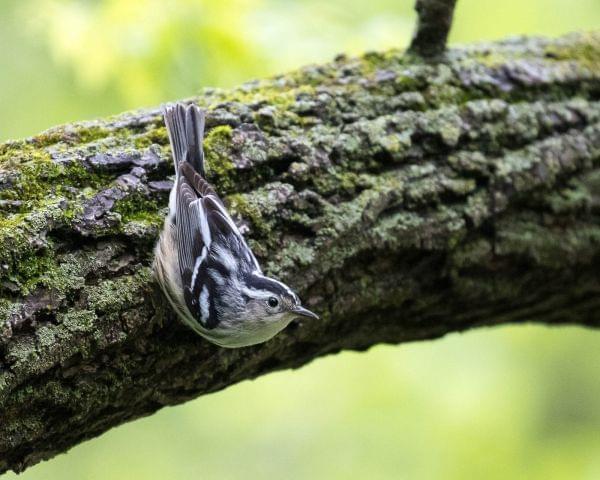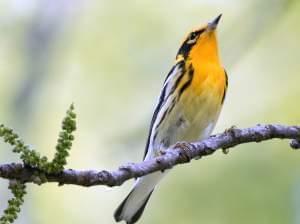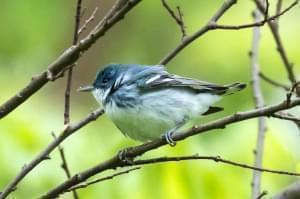Extra time? The birds are out there!

A Black-and-White Warbler curious about the click of the camera shutter. Rob Kanter
Although the Covid-19 pandemic has forced me and you to drastically limit our movements, it has had no such impact on the most mobile creatures on earth, birds. And for Midwesterners, the first couple of weeks in May offer opportunities to see more migratory birds than any other time of year.
Sure, a variety of birds have been migrating through central Illinois since February. During the late winter and early spring something like 240 species of birds belonging to 39 families pass this way. But for most birders, the highlight of spring is songbird migration, and that will become most intense in the days to come.
 There are great numbers of birds and a great variety of species represented in this wave, hundreds of thousands of individuals belonging to more than 120 species. The most dazzling among them are members of a family of birds known as warblers, which are incredibly colorful little birds that average only about a third of an ounce in weight. Although they are small, warblers migrate long distances, from wintering ranges in Mexico, and Central and South America to breeding areas in the U.S. and Canada.
There are great numbers of birds and a great variety of species represented in this wave, hundreds of thousands of individuals belonging to more than 120 species. The most dazzling among them are members of a family of birds known as warblers, which are incredibly colorful little birds that average only about a third of an ounce in weight. Although they are small, warblers migrate long distances, from wintering ranges in Mexico, and Central and South America to breeding areas in the U.S. and Canada.
As they move north, warblers feed on insects, especially the caterpillars, bees and wasps that populate the crowns of trees as they flower and leaf out. (This habit of the birds accounts for a condition that afflicts birders known as “warbler neck.” That’s the pain you experience when you spend too much time looking up.)
Although 20 species of warblers breed in Illinois, only about half of those nest in the central part of the state. Most individuals of the 37 warbler species that occur here during spring are just passing through on their way further north.
Ironically, the highly fragmented nature of the central Illinois landscape creates great opportunities for warbler watching. Migrating birds that need trees to feed in when they stop are concentrated in urban areas and the isolated woodlands that remain here.
It seems almost foolish to try to describe in words the vivid beauty that prompts birders to get out before sunrise day after day. Some warblers are all about color. The blackburnian warbler’s throat and head, for instance, exhibit such a bright combination of orange and yellow that it looks to be on fire. And the cerulean warbler— well, if you’ve only experienced “cerulean” as the color of a crayon, you’ve got to see this bird. Other warblers are about patterns. The aptly named black and white warbler, for example, makes up for its lack of color in the same way a zebra does, by sporting crisply defined black and white stripes all over.
well, if you’ve only experienced “cerulean” as the color of a crayon, you’ve got to see this bird. Other warblers are about patterns. The aptly named black and white warbler, for example, makes up for its lack of color in the same way a zebra does, by sporting crisply defined black and white stripes all over.
My usual advice to people who are looking for a little help or company in birding is to check out the Sunday morning bird walks hosted by the Champaign County Audubon Society at Busey Woods and Crystal Lake Park in Urbana. But those have been suspended for this season, as have all of the birding related activities normally hosted by local the Urbana Park District and the Champaign County Forest Preserve district.
That said, the people I know who get the most out of birding are the ones who, at some point in their lives, just started paying attention to the birds around them every day. Of course, a field guide and a decent pair of binoculars will speed you along. But there’s nothing to keep you from using your eyes and or ears every time you leave the house.
Three resources of interest from the Cornell Lab of Ornithology:
All About Birds, for online bird information including identification, life history, etc.
Merlin an app to help with bird identification in the field.
eBird an online database for recording observations and for access to what others are seeing in your area.

